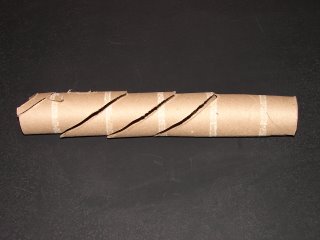
For over forty years I have been experimenting and training with many types of fighting knives. Just when you think you know everything there is to know about a subject something new comes up. That’s the way it is with blade geometry and the dynamics of cutting. My test-cutting medium is not very exotic. It consists of simple cardboard tubes from paper towel rolls or hollow tubes formed by rolling 3 sheets of newspaper and taping them.

One night at our dojo I took some time to work with a new knife from Laci Szabo called the Kamaitachi™. This knife is like a kerambit on steroids. Right from the beginning I dismissed it as a stabbing weapon and figured it was only suitable for tearing and ripping actions. When I queried Laci about how this knife was intended to be used he said that it was “the simplest of all of his knives to use.” That didn’t answer a lot of my questions. Despite its weird shape I decided to try some experimental thrusts with it. I was quite surprised and impressed with the stabbing qualities of the knife. The point is so offset from the centerline of the blade that I thought it would create a torquing effect upon impact but it didn’t seem to. When thrusting it works best if it is held in a modified reverse grip. In fact for any technique it seems more comfortable when held this way. So now I knew it was capable of thrusting but it is still a very short-range knife compared to something like a Hells Belle Bowie. Another surprise was that when I tried slashing with the Kamaitachi it did not do well at all. This was disappointing considering its talon-like curvature. The poor performance may be due to my unfamiliarity with it or my technique so I’ll give it more time before passing judgement. Laci’s philosophy is that a knife’s ergonomics ought to be tailored to the way a human being moves, not the other way around. That makes sense to me but I still feel like I have to figure out which way to move my body to keep the Kamaitachi happy.
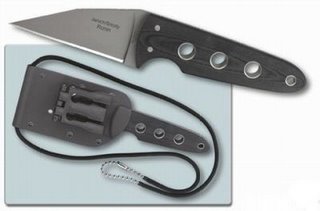
Next are two similar knives, whose prototypes were made by Mike Snody and then manufactured by two high-end cutlery firms. Through the wonders of Ebay I procured the first of these two knives, an older Spyderco Ronin™. Michael Janich originally designed the Ronin, Snody made the prototype, and Spyderco eventually picked up the design to produce the semi-custom Ronin. It is a neat little knife and doesn’t seem to have gained the popularity it should have. According to an article written by knife designer and self-defense expert Janich, during a thrust the unusual blade shape will cause the knife to ride the sloped back edge and thereby create an ever widening wound as it enters. (This is the same effect that James Williams of Ancient Edge/Bugei claims for his design the Hissatsu™.) Going against traditional logic, Janich also made the claim that the cutting edge of a curved blade will tend to push itself away from the target rather than cut into it. He said that
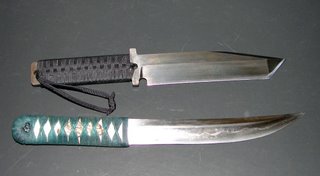 this is especially true when trying to cut a rounded surface. That statement, although counter-intuitive, started me thinking. For example, you would assume that the gracefully curved Shobu tanto by Gary Bradburn would easily out-cut the brute shown above it with the straight edge. To my great surprise, they both cut equally well.
this is especially true when trying to cut a rounded surface. That statement, although counter-intuitive, started me thinking. For example, you would assume that the gracefully curved Shobu tanto by Gary Bradburn would easily out-cut the brute shown above it with the straight edge. To my great surprise, they both cut equally well.So far I have not worked with the Ronin as much as the other knives being discussed but without a doubt its needle-like tip will provide serious penetration, and the cutting edge, although short, should cut deeply. The Ronin’s excellent cutting ability is the result of some blade dynamics I will explain shortly. Maybe if the Ronin had been made available in something a bit bigger, something with more than a three-inch blade, it would have made more of a dent in the knife market. In winter, when an attacker is liable to be bundled up in a heavy sweater and coat, any knife with a blade this short is going to have a tough go of it if you decide to defend with a thrust.
 Next, the JuJu™, a Snody/Benchmade knife, with a blade shape (a modified wharncliff design) somewhat similar to the Ronin. Penetration was excellent, as would be expected. Being a bit larger than the Ronin, and having more mass, the JuJu really does well in cutting tests. The cutting qualities of yet another straight edged blade were much better than I expected and that is what finally triggered my research into an area of blade geometry that I had not explored before. The JuJu has a chisel-ground blade, with only one bevel, which makes for a very acute edge angle. This in itself improves the cutting performance but that is not the whole story as we will see later. Having a short four and three quarter inch blade makes it difficult to accurately hit cutting-targets and I often found myself drawing my cut too short and missing the target altogether. But if my aim and distancing were good, and my angle was correct, pieces of the cardboard tube were sheared off clean as a razor stroke.
Next, the JuJu™, a Snody/Benchmade knife, with a blade shape (a modified wharncliff design) somewhat similar to the Ronin. Penetration was excellent, as would be expected. Being a bit larger than the Ronin, and having more mass, the JuJu really does well in cutting tests. The cutting qualities of yet another straight edged blade were much better than I expected and that is what finally triggered my research into an area of blade geometry that I had not explored before. The JuJu has a chisel-ground blade, with only one bevel, which makes for a very acute edge angle. This in itself improves the cutting performance but that is not the whole story as we will see later. Having a short four and three quarter inch blade makes it difficult to accurately hit cutting-targets and I often found myself drawing my cut too short and missing the target altogether. But if my aim and distancing were good, and my angle was correct, pieces of the cardboard tube were sheared off clean as a razor stroke. The last weapon I want to discuss is the popular Razel™ from the Graham brothers. Although the Graham brothers describe their invention as the most useful tool you’ll ever own, this razor-chisel utility tool has some very interesting possibilities as a weapon. It doesn’t take much imagination to recognize it as a “slasher”. After all, the blade is nothing more than a truncated straight razor. My Razel also has a slight belly, but is this the source of its phenomenal cutting? After forty years of playing with knives, knowing beyond a doubt that curved blades cut and straight blades puncture, I had to question whether I was right or wrong? I hate to admit it, but I was pretty much wrong. What was also surprising is the Razel’s impressive capacity to create large holes during a thrust but I’ll discuss that last.
The last weapon I want to discuss is the popular Razel™ from the Graham brothers. Although the Graham brothers describe their invention as the most useful tool you’ll ever own, this razor-chisel utility tool has some very interesting possibilities as a weapon. It doesn’t take much imagination to recognize it as a “slasher”. After all, the blade is nothing more than a truncated straight razor. My Razel also has a slight belly, but is this the source of its phenomenal cutting? After forty years of playing with knives, knowing beyond a doubt that curved blades cut and straight blades puncture, I had to question whether I was right or wrong? I hate to admit it, but I was pretty much wrong. What was also surprising is the Razel’s impressive capacity to create large holes during a thrust but I’ll discuss that last.So where does cutting power really originate from? If, as Mr. Janich said, a curved blade is not the most effective shape, why isn’t it? It’s a matter of PSI, pounds per square inch. That sounds boring already doesn’t it? Consider for a moment the lowly single-edged razor blade, the same one used in utility knives and scrapers everywhere. If you take a test medium and place a razor blade with the full edge in contact and push down with all your weight, how deeply will that blade cut? Not very deep I would guess. Ok, now perform the same test and slide the blade along the surface[1]. You should see a difference, because now you have pressure and
 movement. Finally, apply the same pressure, cock the blade up forty-five degrees so that only the corner or tip is contacting the surface, and slide it along. If the tip doesn’t break off you will see a huge increase in the depth of the cut. Why would the tip break off? Because the PSI are very high when you apply the same force on a very small area, in this case just the tip of the razor blade. It doesn’t matter how long or short the razor blade is since you are only cutting with the tip. There is no curve to the tip of the razor blade either, it is just like the point of the Ronin, the JuJu, and the Razel. Therefore, I am not so sure that it is the curvature, or lack thereof, that makes the difference in the blade’s cutting performance. It is more the fact that the curved blade does not allow the fullest application of PSI that can be developed with the tip of the wharncliff style blade. With a curved blade the tip may never come into contact with the cutting medium at all. In essence the best cutting is not actually done with the edge, straight or curved, and therefore the blade length and shape have little influence on cutting performance.
movement. Finally, apply the same pressure, cock the blade up forty-five degrees so that only the corner or tip is contacting the surface, and slide it along. If the tip doesn’t break off you will see a huge increase in the depth of the cut. Why would the tip break off? Because the PSI are very high when you apply the same force on a very small area, in this case just the tip of the razor blade. It doesn’t matter how long or short the razor blade is since you are only cutting with the tip. There is no curve to the tip of the razor blade either, it is just like the point of the Ronin, the JuJu, and the Razel. Therefore, I am not so sure that it is the curvature, or lack thereof, that makes the difference in the blade’s cutting performance. It is more the fact that the curved blade does not allow the fullest application of PSI that can be developed with the tip of the wharncliff style blade. With a curved blade the tip may never come into contact with the cutting medium at all. In essence the best cutting is not actually done with the edge, straight or curved, and therefore the blade length and shape have little influence on cutting performance.I said I would address the thrusting capabilities of the Razel later, so here goes. Many people have looked at the blade of the Razel and arbitrarily decided that it cannot be used to puncture or thrust. These people must not have experimented at all with the knife or they would know how stupid that statement is! When the Razel is held naturally, in the right hand with the wrist held straight, the knife is angled about forty-five degrees to the left. This means that during a thrust the sharpened flat end of the blade is not striking the target squarely. In fact what you have is a very wide tipped blade something like a Roman pugio (dagger) or a hunting broad-arrow. Since both edges are razor sharp this knife will definitely penetrate, and in the process leave a very wide wound channel. So much for arbitrary determinations and that is what this whole article is about.
These discoveries make me wonder about the effectiveness of all those traditional drop-point deep-bellied skinning knives that have been marketed over the last 50 years. Perhaps if nothing else their blade shape was most effective at preventing them from cutting too deeply (for the reasons stated above) and penetrating internal organs. Their actual cutting performance may not have been what it could have, had they used a wharncliff style blade. Similarly, I am questioning the performance of re-curved blades, which have always been a favorite of mine. My particular affinity for knives with this shape may be due to the sensuality of the curve more than to its actual performance. Again, I was basing my preference on perception and other’s opinions, not on actual testing.
If high PSI focused on a small area is the secret to cutting then why did the Kamaitachi do so poorly? A sickle shaped blade is designed to gather in and cut and the pressure on the target is applied over a broad area, growing until it reaches the tip. I suspect that at this point the target can be torn or ripped but not smoothly cut. Remember that the cutting action of a sickle blade is applied against very tiny stalks of grass or grain. The talons of a bird of prey are not intended to cut; or else their game would slide through their grasp and escape. The talons are designed to gather in and clutch. That is exactly what the Kamaitachi does! It can be used to trap and tear, or collect-up, pass, and stab.
While we all have preconceptions of what a hunting knife or a fighting knife is supposed to look like, as the famous architect Frank Lloyd Wright once said, “Form follows Function.” Once in a while we have to address our preconceptions, consider the options, step outside of the box, and question the function. Considering the cost of the knives involved, this has been an expensive experiment but I think that I have learned a lot about how a knife really works and just how wrong perceptions can be.
David Decker
White Shadow Dojo
[1] You will probably find that in order to slide the blade you must shift it, slightly lifting one corner so it doesn’t dig in and prevent sliding. This means that you have shifted the pressure to a smaller area, increasing the PSI which, in addition to the movement, also affects the cutting.
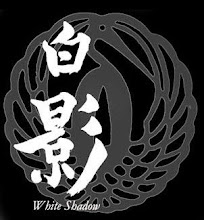
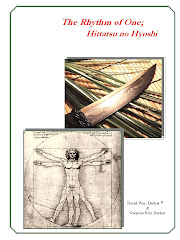




No comments:
Post a Comment